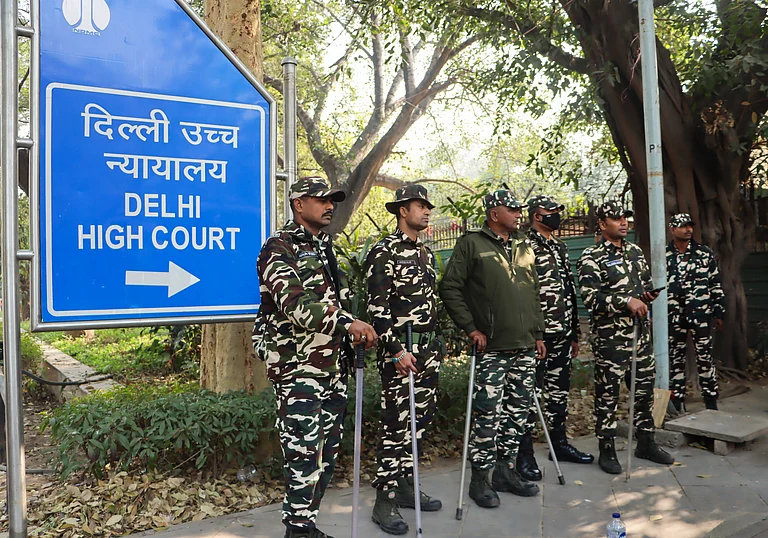The UNFPA’s State of the World Population Report 2023, released on 19 April, can be seen as being overtly India-centric. Many of the macro concerns and the empirical investigations in the report bring India into the centre stage of the global population debate. A flash point picked up by the media is that India is already the most populous country in the world, as its estimated population will be 1,429 million by July 2023, 2.9 million higher than that of China. This, however, is no news since the United Nations World Population Prospects (WPP) had predicted it in June last year.
The key concern in the report is the unwarranted “population anxiety” in developing countries, persisting even in the face of declining fertility rates. This indeed is the case in India as the central government has attempted to push the Population Control Bill in Rajya Sabha (now withdrawn) despite a sharp decline in total fertility rate (TFR), as reported by the Fifth National Family Health Survey (NFHS-5). The TFR coming down to or below the replacement level—which ensures stabilisation of the population in the long run—in all states except Bihar, Uttar Pradesh, Jharkhand, Manipur and Meghalaya, certainly merits revisiting the ongoing and proposed family planning measures.
The UNFPA report looks at the 8 billion people in the world as an opportunity or an asset, and not a liability. It expresses satisfaction over a significant increase in global life expectancy —three years in a decade— over the past three decades. This has gone up significantly in India as well, the figures being 71 years for men and 74 years for women.
The most important component of the study is a global survey, commissioned by the UNFPA and conducted by YouGov, with a sample of over 1,000 people each from eight select countries including India but not China. Unfortunately, it has an upper income urban bias as it is conducted through telephonic interviews and is restricted to towns and cities. Despite the limitations, the survey brings out how the policies and programmes of the governments are shaping or are being shaped by popular perceptions. The report argues that several long-term concerns and priorities relating to gender equity, social justice, climate change, etc. are being pushed to the backstage in this process.
The report gives a warning regarding the tapering off of the ‘demographic dividend’ in developing countries, including China, with the sustained increase in life expectancy and dependency ratio, along with a decline in fertility. India has a significant advantage here and is likely to enjoy this dividend for at least another couple of decades, with its 68 per cent of population currently in the 15-64 years age-group. It has a vast and growing consumer market which can spur domestic production. All these opportunities seem to be drying up in China as 14 per cent of its population is already aged 65 years or more, a figure that is twice that of India.
A key concern is “population anxiety” in developing countries, persisting even in the face of declining fertility rates.
Gender empowerment is a major area of concern for India, in terms of gender development indices, constructed by different global agencies. Multiple indicators of gender, rights and human capital in the report point out that India has miles to go even to come at parity with the global average in gender justice. It takes a serious view of the fact that many of the measures designed to restrict population and accelerate growth have led to the disempowerment of women in the developing world, including India. Stringent economic and administrative sanctions against people having larger than the stipulated family size puts an enormous burden on women, resulting in their loss of status in the family and society and violence by partners.
The report further considers the differential impact of family planning measures on different communities within a country, taking India as an illustrative case. Fertility rates here are noted to be high for certain communities because of historical and cultural factors, besides low literacy, high poverty, high infant mortality, etc. It observes that strong incentives and disincentives geared to limit the family size would have serious adverse impact on minorities, leading to disempowerment, dilution of human rights, particularly for the women in the communities. It argues that the rise of nationalism accompanied by rhetoric regarding sustained “high fertility among Muslims”, emanating from “a biased reading of demographic data can be misused” and lead to “organised violence”.
A few observations on population dynamics in India and the recommendations emerging from the report are in order. The WPP had projected in the mid-1990s that India’s population will be 1.53 billion in 2050 and maintained this even during the first decade of the 21st century. The corresponding figure from the Registrar General of India (RGI) is not available for that year. However, in 2006, it had projected the population in 2025 to be 1.39 billion and revised it to 1.41 billion in its 2020 projection. Both the figures are higher than the WPP figure of 1.33 billion for 2025. Interestingly, there was a paradigm shift in the WPP report of 2015 which placed the population figure in 2025 at 1.46 billion, way above its earlier projections, as also those of the RGI. The latest WPP of 2022 has revised the figures down to 1.45 billion in 2025 and 1.67 billion in 2050. Furthermore, it predicts that India’s population will stabilise in 2064 at 1.70 billion, four years ahead of the last projected year.
All Indian states, except for the five mentioned above, now record a replacement level of fertility of 2.1 or less. They have witnessed an increase in the use of modern contraceptives, resulting in a 2 per cent decline in the birth rate per year. Scholars like C Rangarajan, K Srinath Reddy, and organisations like Lancet have predicted that population stabilisation would take place below the 1.6 billion mark by the mid-50s, if not by 2045, as envisaged by the National Population Policy. Given this, it was expected that the WPP would revise down the Indian population estimates and the UNFPA would adjust its projections accordingly. The results coming from the long overdue Population Census could have helped to end this speculative controversy.
Just short of a one and a half billion people, India is likely to command more influence on the global stage and could stake its claim for a permanent membership on the United Nations Security Council (UNSC). This population will, however, be a real asset only if proper health, education, and employment opportunities become available to them, particularly to women, failing which the benefits of the demographic dividend would elude the economy. Given the high differences in fertility and growth rate of the labour force across the states, creation of an integrated labour market through smooth mobility of labour on the face of growing assertion in regional identities will be important.
The key recommendation given by the UNFPA pertains to “ensuring gender equality, empowerment and advancing greater bodily autonomy for women and girls” to achieve a sustainable future. Ensuring gender parity is the key challenge in India, too, with the low and declining work participation of women, particularly in decent jobs. Several initiatives have been taken and are envisaged to improve gender equity and right-based engagement of women in a time-bound manner. Unfortunately, the deterrents and incentives of the government have had only limited impact on improving the sex ratio at birth. In the face of relatively liberal abortion laws and rampant illegal termination of female foetuses through corrupt practitioners and social networking, saving the lives of unborn female babies while ensuring, at the same time, the bodily autonomy for women, will be a real challenge.
(Views expressed are personal)
________________________________________
Amitabh Kundu is senior fellow at the World Resources Institute, New Delhi office
This appeared in print as "All Eyes On India"























